How to Heal and Shrink Gum Pockets Before It's Too Late
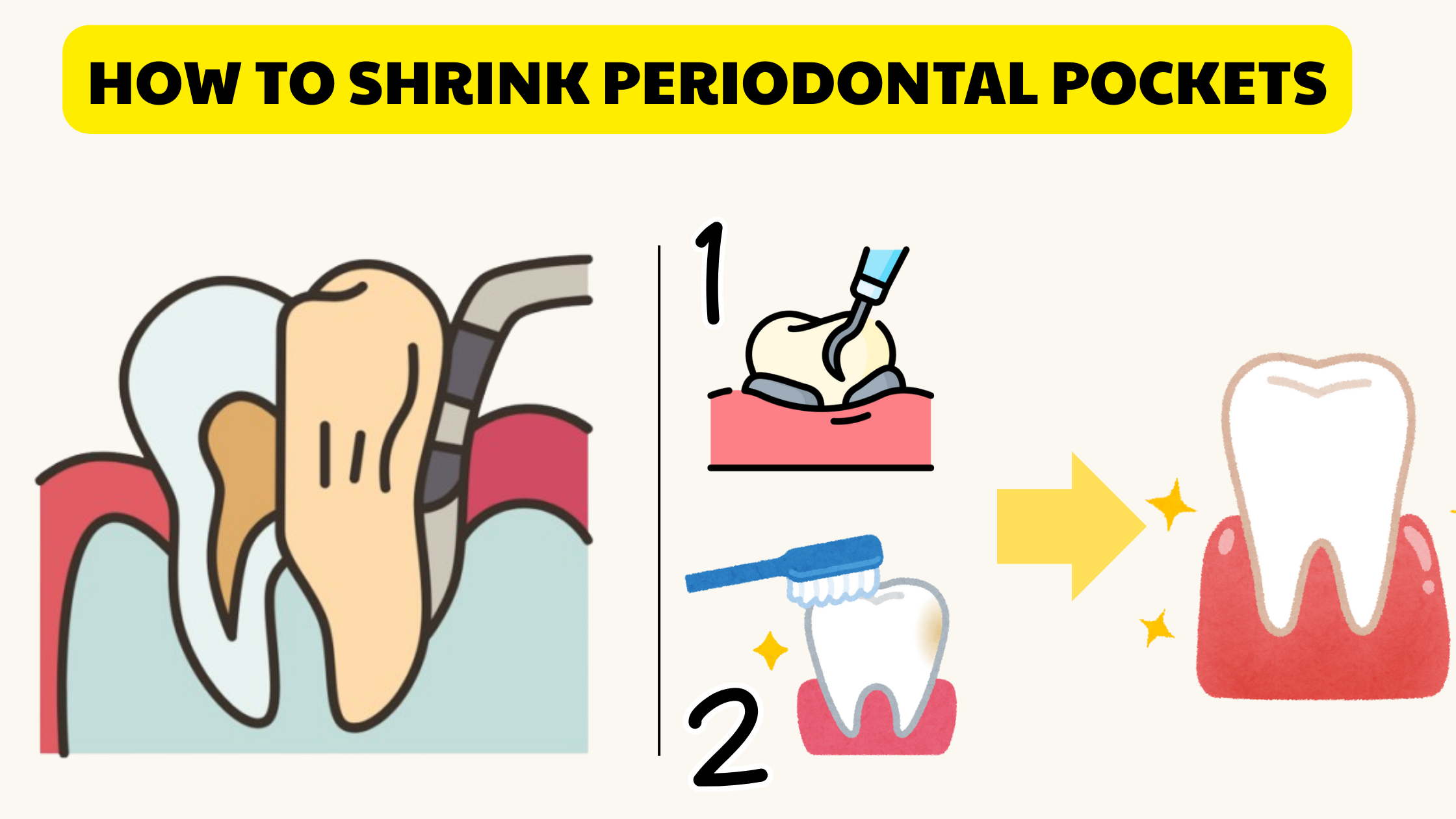 Gum pockets are one of the telltale signs of advanced gum disease. They form when bacteria slip into the spaces between your teeth and gums, gradually working their way deeper and creating unnatural gaps called periodontal pockets.
Gum pockets are one of the telltale signs of advanced gum disease. They form when bacteria slip into the spaces between your teeth and gums, gradually working their way deeper and creating unnatural gaps called periodontal pockets.
The biggest problem is that you can’t clean these pockets at home. They become the perfect hiding place for harmful bacteria, which makes gum disease a self-sustaining cycle:
More pockets ↔ More aggressive bacteria ↔ Deeper pockets and tissue damage
If left untreated, bacteria will keep breaking down the bone that supports your teeth, which may become loose—and in severe cases, fall out altogether.
In this article, we’ll go over the most effective ways to shrink gum pockets, how they actually work, and what you can do right away to stop the damage before it's too late.
In this article:
1. What Are Gum Pockets?
2. What’s the Main Culprit Behind Gum Pockets?
3. Why Should You Treat Gum Pockets?
4. How to Shrink and Heal Gum Pockets
5. Can You Treat Gum Pockets at Home?
6. What You Need to Do From Your Side
What Are Gum Pockets?
Gum pockets are abnormal spaces that form between your teeth and gums when bacteria damage the bone and ligaments that hold your teeth in place. As the gums loosen and become detached from the roots, these spaces become deeper and wider.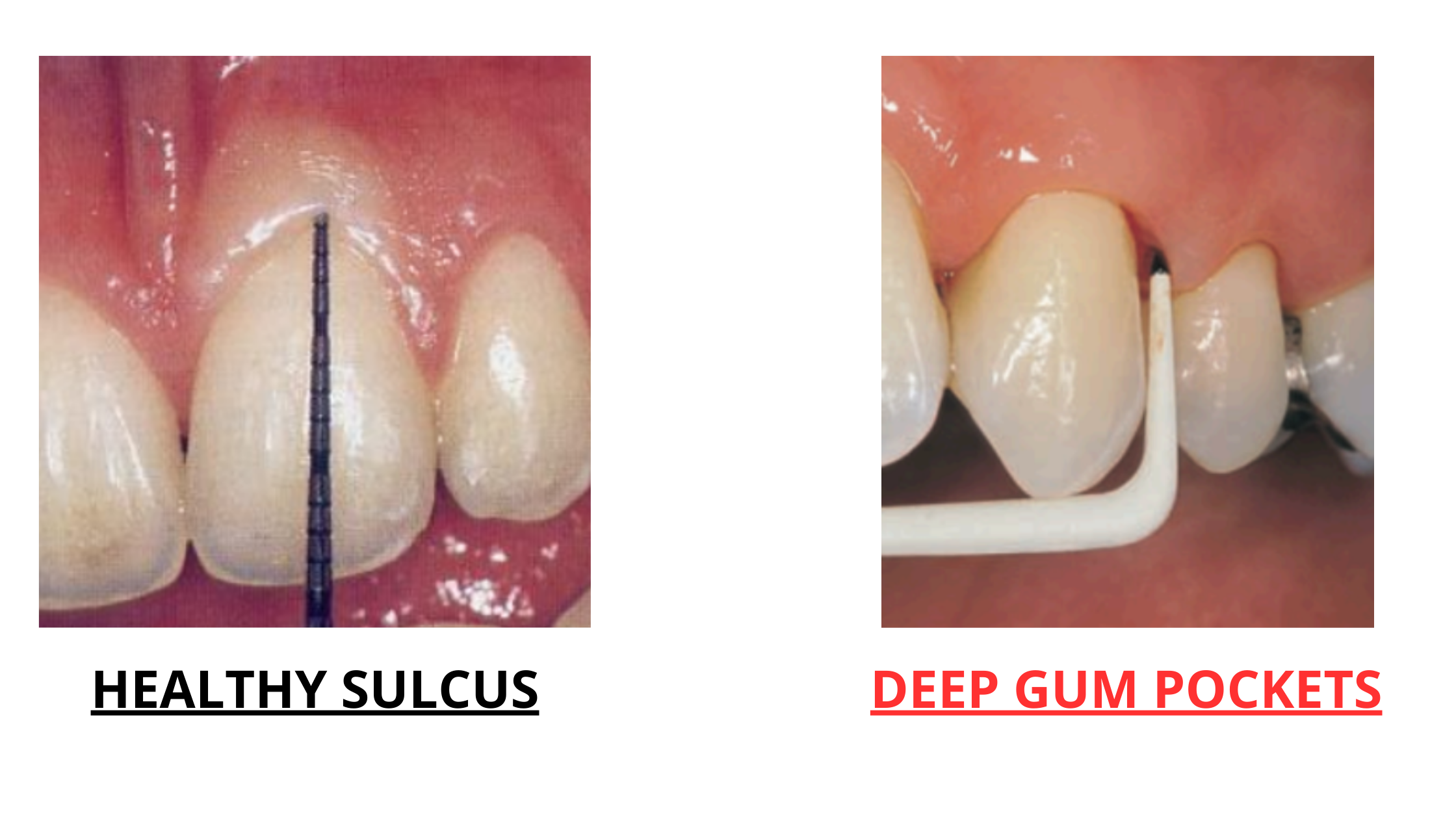
In the healthy state, there’s always a small natural gap between the gum and the tooth—called the sulcus—which is about 1 to 3 mm deep. Anything deeper than that is considered a gum pocket, which should ideally be reduced back to this healthy range to keep your gums strong and firmer.
The stage of gum disease that leads to gum pockets is known as periodontitis. Unfortunately, periodontitis is irreversible—meaning the bone and ligaments that are lost can’t be fully restored. The more severe the damage, the more complex and challenging the treatment becomes.
How can I check for gum pockets?
The only way is to have your dentist probe your gums using an instrument called a periodontal probe. This tool gently slides between your tooth and gum to measure the pocket depth. Based on how deep they are, they can be:
- Mild: 3 to 5 mm
- Moderate: 5 to 7 mm
- Severe: Above 7 mm
What’s the Main Culprit Behind Gum Pockets?
The number one driving force behind gum pockets—and most gum disease—is bacteria living in plaque.Plaque is a soft, thin, whitish film that constantly forms on your teeth and along the gum line. Just one milligram of plaque can contain over 100 million bacteria!
Things get even worse when plaque hardens into tartar (calculus). Tartar is rough, sticky, and much harder to remove at home. Its porous and rough texture makes it your gums' worst nightmare, because it traps more plaque and bacteria, and can even build up and hide beneath the gum line, which you can't directly see.
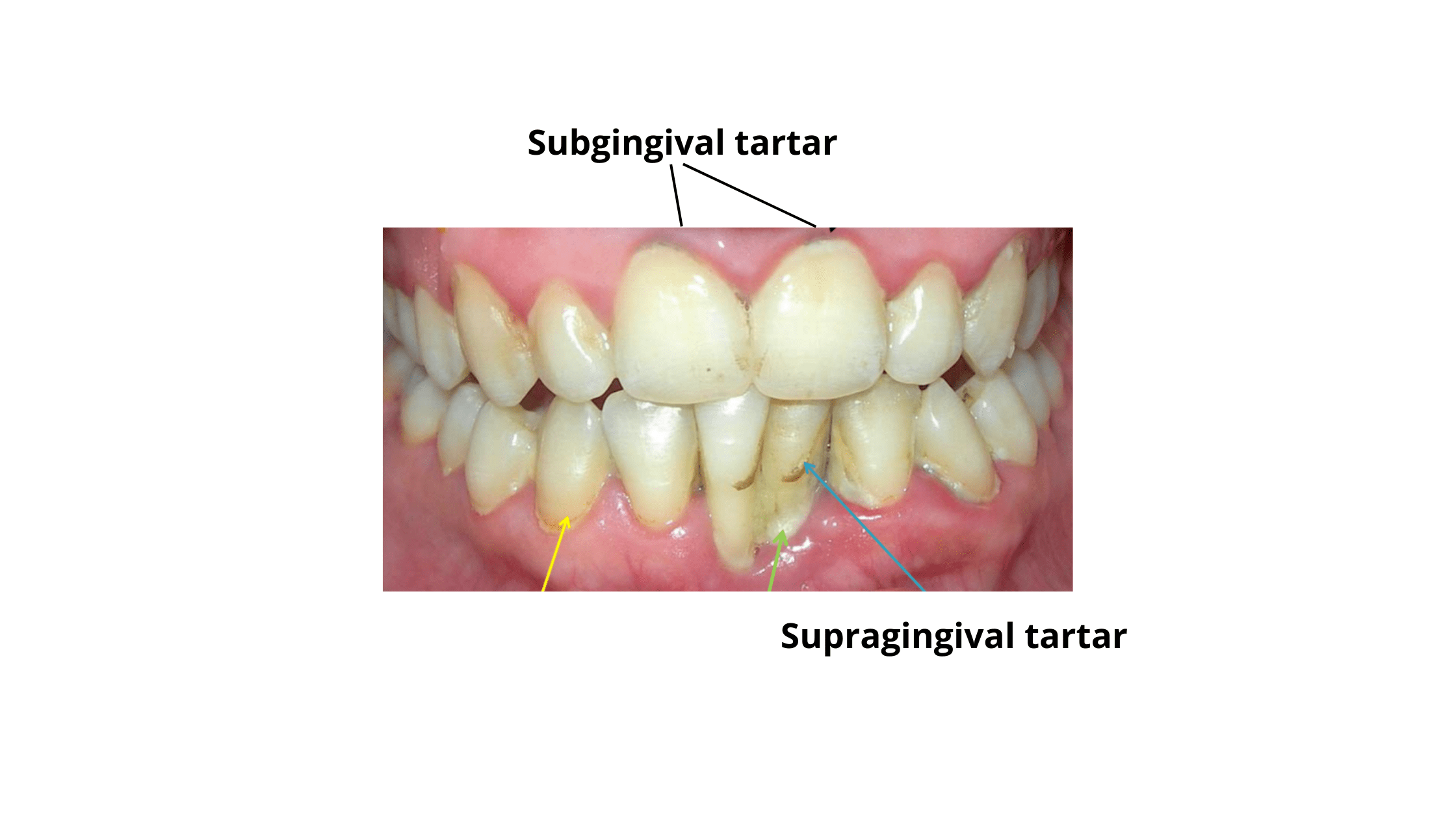
But plaque and tartar alone don’t explain the whole picture. Gum pocket formation is more complex and happens when several factors work together: bacteria, your body’s immune response, genetics, and lifestyle or environmental factors.
What matters most is this: periodontitis sets in when harmful factors outweigh your body’s protective defenses.
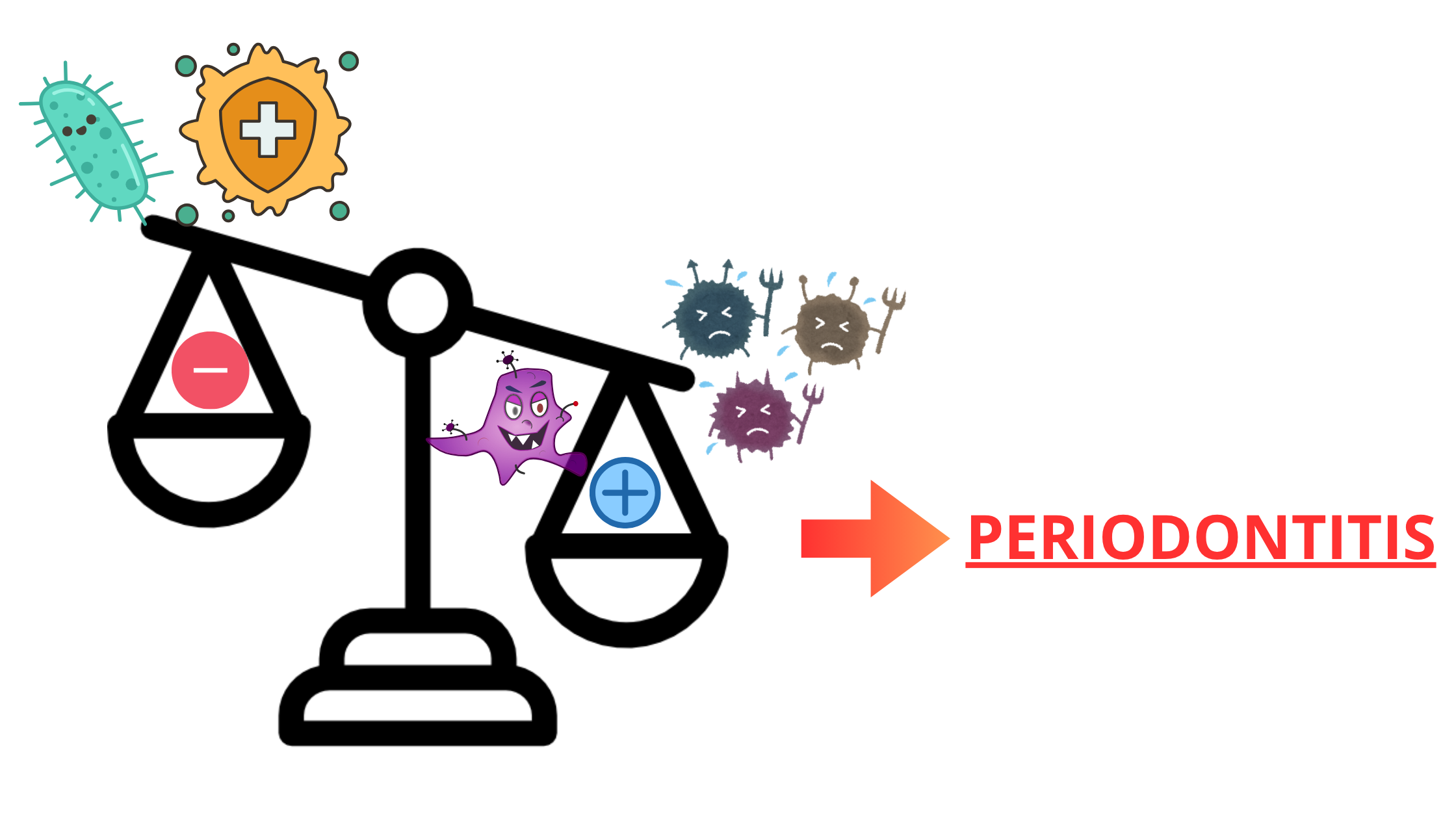
Here’s how it works:
- Bacteria: Your mouth hosts over 700 species of bacteria. In a healthy balance, “friendly” bacteria keep harmful ones in check. When this balance shifts, gum disease can take over.
- Immune response: Your body’s first defense is inflammation. While it fights bacteria, prolonged or poorly regulated inflammation can damage your gums.
- Genetics: Some people are more prone to gum disease due to genetics. If aggressive gum disease runs in your family, your risk may be higher.
- Environmental factors: Stress, smoking, and conditions like diabetes can increase both the risk and severity of gum disease.
Why Should You Treat Gum Pockets?
The main goal of periodontal therapy is to eliminate gum pockets.Why? These pockets are the perfect hiding place for aggressive bacteria that drive gum disease.
They create deep, narrow spaces that trap plaque and bacteria—and the problem is, you can’t clean them effectively at home.
To give you an idea:
- Brushing can only reach about 0.5 mm below the gum line.
- Flossing can reach around 2.5 mm.
So, if you have a 5 mm pocket, nearly half of it will remain untouched no matter how perfectly you brush and floss.
As long as pockets remain, your gums cannot heal on their own. They can only get worse, leading to more bone loss, receding gums, and eventually, tooth loss.
That’s why gum pockets can become self-sustaining over time:
Deeper pockets → More bacteria → More damage → Even deeper pockets
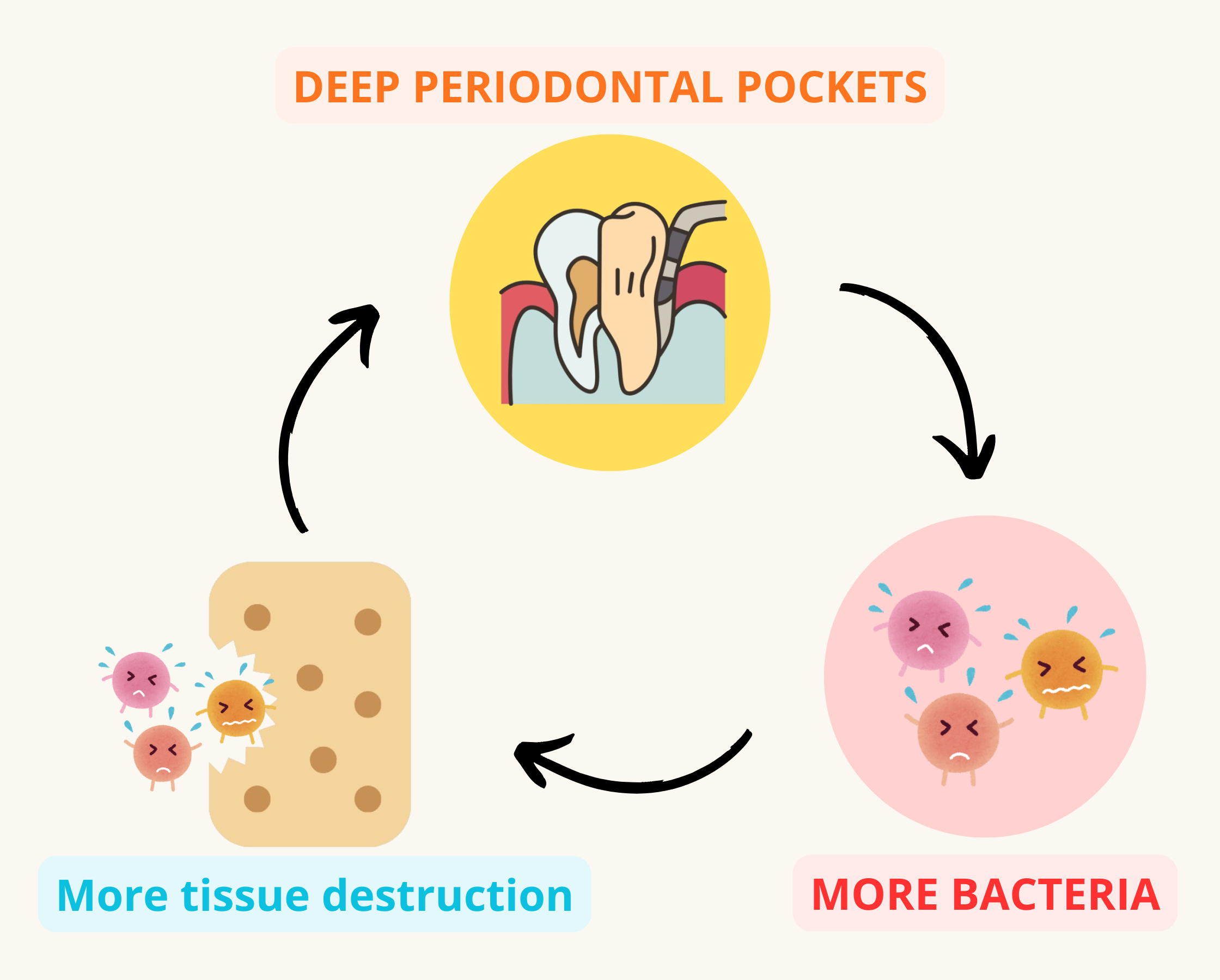

The only way to stop this vicious cycle is to have the pockets professionally cleaned and then maintain excellent oral hygiene at home.
How to Shrink and Heal Gum Pockets
The first step in treating gum pockets is always to remove the local factors—plaque and tartar.In simple terms, there are two main treatment approaches:
- Non-surgical treatment: The first line of treatment for most gum disease.
- Surgical treatment: The second resort when pockets persist after non-surgical therapy.
1. Non-Surgical Treatment
If gum pockets are caught early (less than 5 mm deep), treatment is usually straightforward. A professional dental cleaning (scaling) to remove tartar, combined with good oral hygiene at home, is often enough to allow the gums to heal and prevent further damage.
Tartar is extremely hard and sticky, and cannot be removed at home, especially when it forms below the gum line. The only way to clean it out is with a scaling procedure done by your dentist or hygienist.
For pockets deeper than 5 mm, an additional procedure called root planing is usually needed. Scaling and root planing are two different procedures that are commonly called deep dental cleaning.
What is root planing, and why do I need it?
Root planing is the process of cleaning and smoothing the root surfaces deep beneath the gums. As pockets get deeper, the gums detach from the tooth roots. These exposed root surfaces become rough, collect bacteria, and fuel even more tissue destruction.
By smoothing and thoroughly cleaning the roots, root planing creates the right conditions for the gums to reattach, which helps reduce pocket depth and restore gum health.
How Can Deep Dental Cleaning Help Shrink Gum Pockets?
Deep dental cleaning helps reduce pocket depth in two main ways:
- Reattachment of the gums: When gums reattach to clean roots, the pocket depth decreases.
- Reduced inflammation: As puffiness and inflammation go down, the gums shrink back to a healthier position, naturally reducing pocket depth.
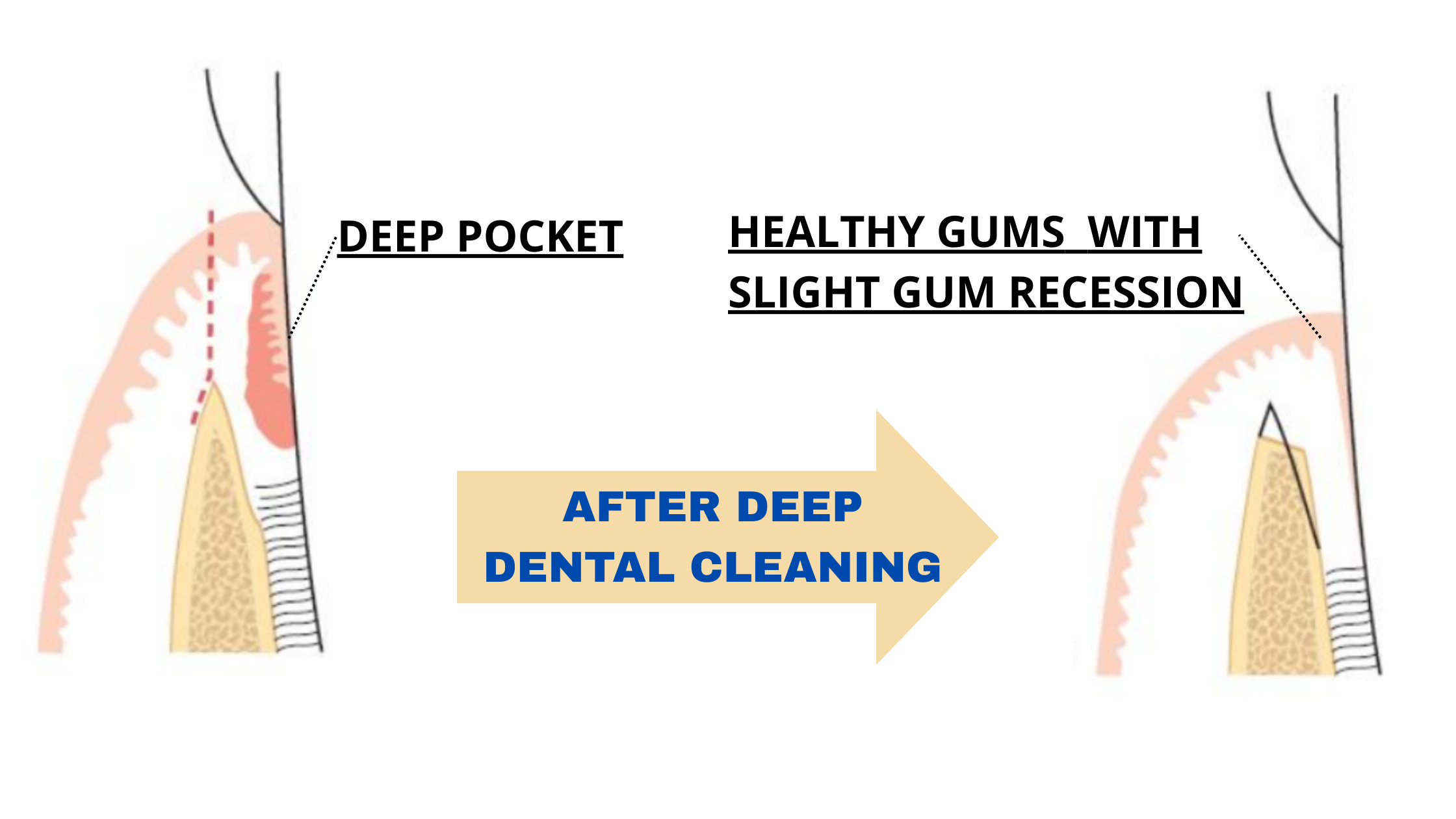
Gum shrinkage or recession is a common and normal effect after deep dental cleaning, and may make your teeth look a little longer.
This doesn’t mean the cleaning procedure caused the recession. Instead, the treatment reveals recession that was already there but hidden beneath swollen gums. The more advanced the gum disease is, the more noticeable the recession will appear after treatment.
While it may look unsightly to some, receding gums are actually a positive sign that the treatment is working.
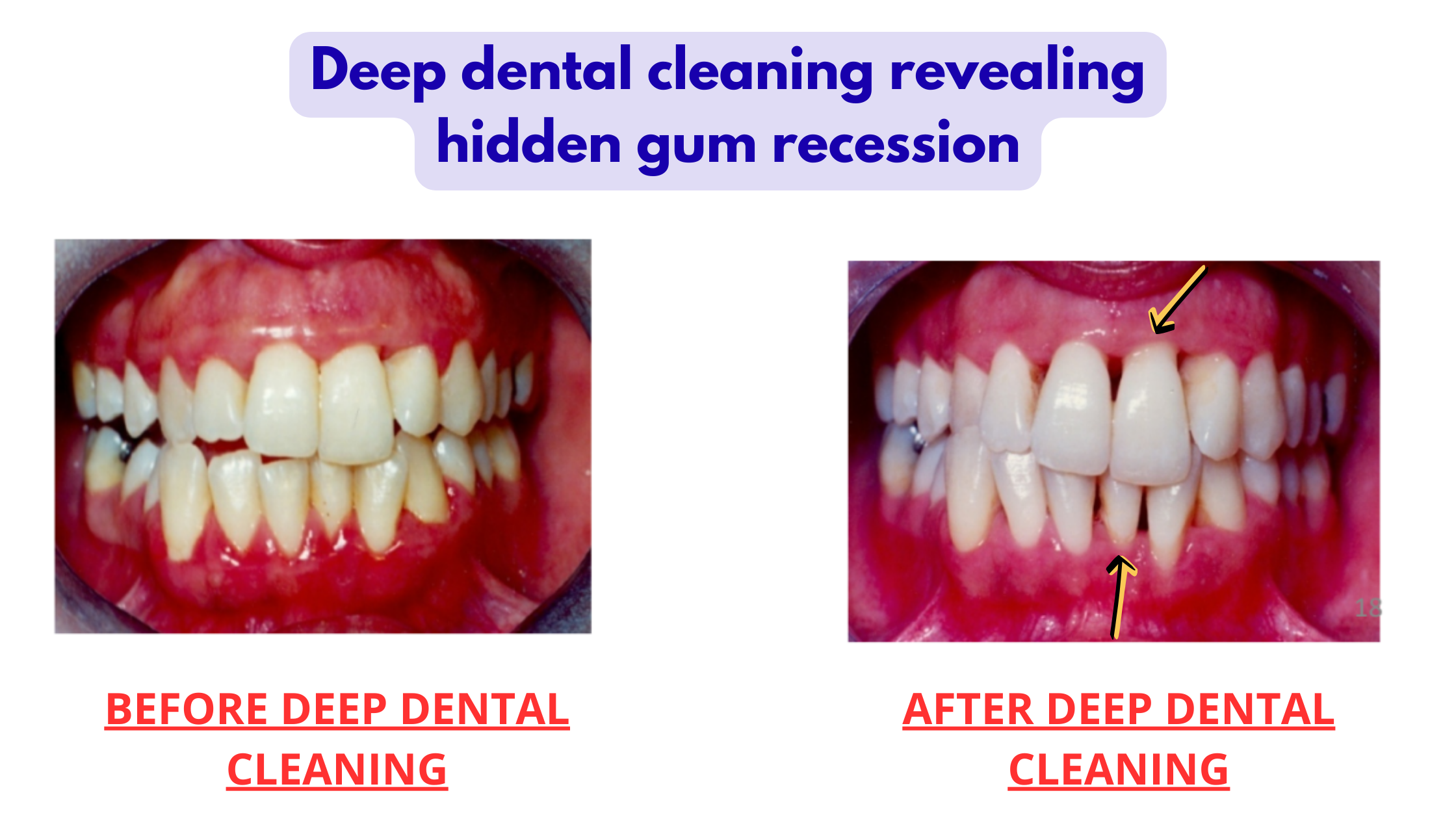
2. Surgical Treatment
Sometimes, non-surgical treatment isn’t enough to fully eliminate the pockets. That’s when pocket surgery becomes necessary.
Pocket surgery is considered when two main conditions are met:
- Pocket depth remains greater than 4 mm even after non-surgical treatment.
- Your oral hygiene is excellent, with good plaque control at home.
There are many surgical techniques, but the basic idea is to lift the gum tissue around the pockets to access the deepest, hardest-to-reach areas under direct vision. Once the pockets are thoroughly cleaned, the gum tissue is repositioned and sutured back into place.
How Can Pocket Reduction Surgery Help?
Like deep dental cleaning, pocket surgery helps shrink pockets by:
- Promoting new attachment of the gums to the teeth.
- Resolving inflammation and allowing the gums to firm up and pull back slightly.
Some surgical techniques intentionally reposition the gum line lower, which can make gum recession more noticeable (as shown below). This may affect appearance, but it’s sometimes the safest and most effective way to eliminate deep pockets. Your dentist will recommend it only when the benefits outweigh the costs.
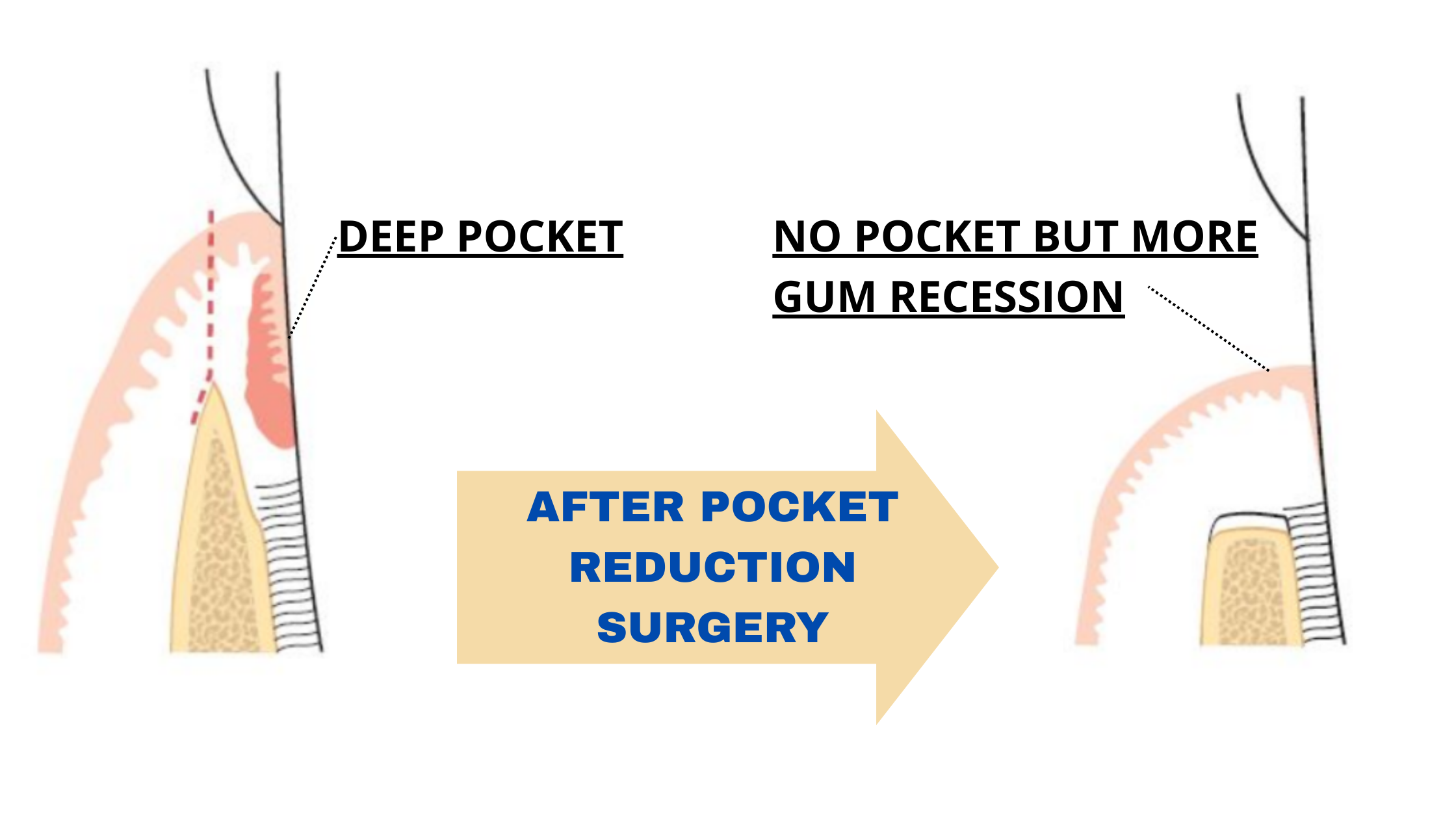

Can You Treat Gum Pockets at Home?
Periodontal pockets are not something you can treat on your own. You simply can’t reach the deepest parts of the pocket, and tartar may be hiding where you can’t see it.Your dentist or hygienist has the special tools needed to clean the deepest parts of the pockets and remove tartar effectively.
If left untreated, pockets can initiate the vicious cycle we discussed earlier—and gradually get worse without you noticing.
People often notice the problem only when their teeth start to shift or feel loose—signs that gum disease has reached a more advanced stage.
That’s why it’s best to treat gum pockets early, when treatment is easier, less invasive, and less costly as well.
What You Need to Do From Your Side
No matter what professional treatment you receive, excellent oral hygiene is essential for long-term success. Even the best treatments can fail if you have poor plaque control at home.Plaque constantly forms on your teeth, even after thorough brushing and flossing. You can’t stop it from building up, but you can control it with regular daily oral hygiene.
Here are some tips:
- Brush at least twice a day for two full minutes. Angle the bristles toward the gum line and use gentle circular motions to clean both your teeth and gums.
- Floss once a day or use another interdental tool, such as an interdental brush or water flosser. Skipping cleaning between your teeth means you’re missing about 40% of your tooth surfaces!
- Clean your tongue daily to reduce bacteria and keep your breath fresh.
- Visit your dentist regularly for professional cleanings and checkups. How often depends on your risk: some people need only once or twice a year, while those with severe gum disease may need more frequent visits.